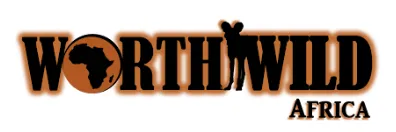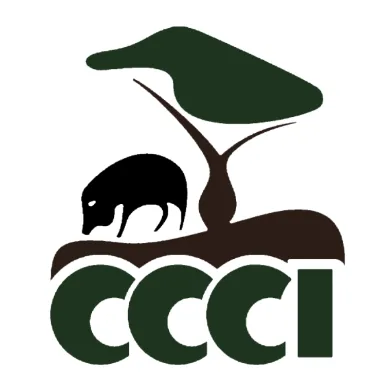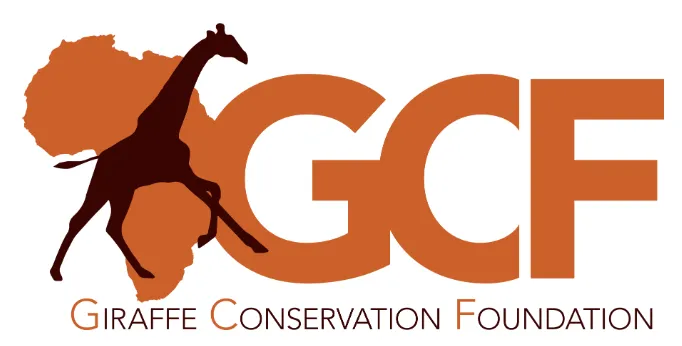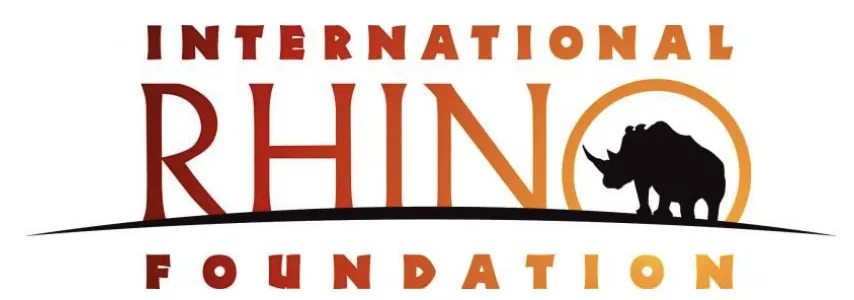ZAA Conservation
ZAA offers two distinct grant opportunities to support conservation efforts:
ZAA Conservation Initiatives Grants
ZAA Global Conservation Fund
ZAA Conservation Initiative Grants are awarded to exceptional proposals focusing on conservation research, education, and community engagement. Each year, ZAA awards up to US $5,000 to projects that emphasize field programs, scientific studies, and multidisciplinary approaches aimed at species conservation, habitat preservation, and biodiversity enhancement.
Awards from the ZAA Global Conservation Fund are provided to Non-Governmental Organizations (NGOs) whose missions align with ZAA’s conservation goals. Formerly known as the Lynn Hall Conservation Grants, these awards support NGOs dedicated to the conservation of species represented in ZAA animal collections. They support NGOs that prioritize species sustainability/reintroduction and focus on education, the promotion of conservation ecology, human/wildlife conflict resolutions, population reinforcement, habitat and landscape restoration, anti-poaching and the bushmeat crisis, and even economy-related engagement by local communities and local governments.
To learn more about these grants, including the selection process and past recipients, please watch our informative webinar: https://youtu.be/4MKpM1DxGlk
Beyond NGO support, ZAA members are also heavily involved in reintroduction programs and rescue and rehabilitation work. Some of the species our members work with include mountain bongo, Attwater’s prairie chicken, Texas horned lizard, Anegada ground iguana, Kemps Ridley sea turtle, and San Joaquin kit fox.
Sadly, modern-day conservation of threatened or endangered species cannot simply be limited to protecting or reintroducing animals in their native ranges. For many, the “wild” is disappearing as humans encroach on their natural habitats. To ensure a species’ long-term survival, managed propagation of wildlife has become an essential part of the conversation and the only insulation against a potential collapse of wild populations.
ZAA's species management program (Animal Management Program, AMP) is coordinated across the family of ZAA accredited members to ensure the greatest genetic variability.
2026 Conservation Initiatives Grants
ZAA is now accepting applications !
2025 ZAA Conservation Initiatives Grant Recipients
1. Guardians of the Flamingo Lakes: A School-Based Conservation Education and Awareness Initiative for Lake Nakuru and Lake Elementeita
Organization: Flamingo Lakes Conservation Network Project Location: Kenya
Principal Investigator: Mr. Eston Kimaswoch
This is a project to conserve birds (over 600 species) around two lakes in Kenya’s Rift Valley. Fifty schools were selected that serve students who live on farms surrounding the lakes. The project includes environmental education, birding, conservation activities, and establishing bird clubs. There is a plan for sustaining the project over the long term through the bird clubs. The PI is a Projects Officer in Flamingo Lakes Conservation Network and, previously, served as Conservation Projects Officer for Wildlife Clubs of Kenya. The PI appears to have spent much of his life in the project area and is highly recommended by the CEO of Flamingonet. The awarded funds will be used for the purchase of birding equipment (e.g. binoculars, etc.) teachers and students training materials, plus additional education and conservation awareness materials.
2. Rapid-response project to save the Mindo Toad: Urgent expansion of the Arlequín Reserve
Organization: Khamai Foundation
Principal Investigator: Mr. Alejandro Arteaga
The project’s overall objective is to prevent the extinction of the critically endangered Mindo Harlequin Toad (Atelopus mindoensis) by safeguarding the only known surviving relict population and its habitat. To achieve this, for this CIG application, they established the following objectives:
Objective 1: With $2,000 of the CIG grant award they will implement a continuous monitoring census to find survivors of the species in two unprotected land lots surrounding the only known surviving population and present this as evidence to two funding agencies for immediate habitat protection.
Objective 2: With $3,000 of the CIG grant award they plan to insure the acquisition of the unprotected lots (‘Vásconez’ land lot) by providing a down payment to the landowner. Four other granting organizations have also recognized the urgency of these actions and are providing funds, including the Mohamed Bin Zayed Foundation, the World Rainforest Fund, the Quick Response Fund for Nature, and the Ceiba Foundation.
The short-term specific outcome is to establish and expand the area of the Arlequín Reserve for ecosystem and habitat protection, with permanent monitoring of the only known surviving population of Atelopus mindoensis, sustained by the implementation of a permanent ecotourism and sustainable self-financing management. If they can secure the purchase of the ‘Vásconez’ lot and legally incorporated into the Arlequín Reserve, they will ensure a permanent protection of a critical habitat for the Mindo Harlequin Toad, preventing deforestation, pollution, and land-use changes that could extirpate the only surviving population. On the other hand, by letting researchers, biology students, and tourists visit the toad site guided by the reserve’s park ranger (Gerardo) and biologist (Amanda), they can generate the funding needed to keep monitoring efforts going permanently.
3. Sustainable conservation of the white-bellied pangolin through suitable habitat mapping and community engagement in Lama Forest Reserve in Benin.
Organization: GeoEnvironment & Biodiversity Conservation NGO
Principal Investigator: Mr. Agbimakou Maurice Foundie
White-bellied pangolins (WBP) are among the most trafficked mammals globally, facing threats from habitat destruction, hunting, and international trafficking. Furthermore, it is the most targeted species by international trade, posing a significant risk to its survival (Challender et al., 2019; Zanvo et al., 2021). Particularly in Benin, where it is the last remaining available pangolin species, the significant causes of decline were identified as deforestation (81%), agriculture (70%), and hunting (77%) (Zanvo et al., 2020). The Lama Forest Reserve is the largest natural forest in southern Benin and one of the last remnant forests within the Dahomey Gap (Nicolas et al., 2020). This forest offers a strategic location for White-bellied pangolin conservation. Conserving the endangered, white-bellied pangolin (Phataginus tricuspis) in the Lama Forest Reserve requires an integrated approach combining habitat suitability modeling (HSM) and community engagement. This project aims to identify critical habitats, mitigate threats, and foster local stewardship to ensure the long-term survival of this species.
Study Objectives:
1- Map suitable habitats using HSM to guide protection efforts.
2 - Conduct community-led anti-poaching patrols against illegal hunting of the white-bellied pangolin and the encroachment of their natural habitats.
3- Raise awareness of pangolin meat and body part users on the conservation plight of focal species.
Funds from the CIG award will be used to purchase camera traps and batteries, subsistence for researchers doing field work, funding of anti-poaching patrols and infographic materials for training of over 300 people including volunteers, former hunters, forest guards, plus community leaders and key stakeholders.
4. Coexistence as a Result of the Adoption of Mitigation Practices in Conflicts Between Predators and Traditional Communities in the Brazilian Pantanal
Organization: Institute for Mitigation of Environmental Problems with Traditional Communities and Jaguars (IMPACTO)
Principal Investigator: Mr. Paul Read
The Brazilian Pantanal is the largest tropical wetland on the planet, known for its rich biodiversity and for harboring top predators such as the jaguar (Panthera onca), a keystone species essential for regulating vertebrate populations and maintaining ecosystem stability. Despite its ecological importance, the jaguar is currently classified as "Near Threatened" by the IUCN (2018) and as "Vulnerable" by Brazil’s Ministry of the Environment (MMA, 2022), with major threats including habitat loss and fragmentation, retaliatory killing, and other conflicts arising from human expansion.
In the Pantanal, approximately 95% of the land is privately owned, and over 80% of these properties are used for extensive cattle ranching. This land-use pattern has led to frequent predation of livestock by jaguars, resulting in economic losses and fueling conflicts with traditional communities, making the region the third largest conflict zone involving big cats in Brazil. This project is focused on rural properties in the municipality of Poconé, located in the Northern Pantanal region of Mato Grosso, Brazil, an area that represents about 11% of the Brazilian Pantanal. This region is characterized by intense cattle ranching and recurrent conflicts involving jaguars. The initiative is part of a broader conservation program launched in 2022 to protect jaguar populations, with Pousada Piuval as its core study site.
Study Objectives:
1. Implementation of Conflict Mitigation Strategies in the Emergency Action Area: The first phase of implementation will take place on five properties that have been previously mapped, based on technical visits conducted since 2024. Non-lethal mitigation tools, including electric fencing and repellent (Foxlight) lighting systems will be installed, tailored to each specific context, with the goal of promoting peaceful coexistence by reducing economic losses and preventing retaliatory killings of these large felines. The CIG award funds will be used to purchase and install on the five ranches the electric fencing and Foxlight lighting systems. By protecting domestic animals, we automatically protect the jaguar.
2. Promote Community Engagement and Awareness for Conservation: To evaluate the effectiveness of mitigation measures, interviews will be conducted before and after their implementation to assess changes in local perceptions about large predators, particularly regarding coexistence and potential economic benefits.
3. Monitor and Evaluate the Effectiveness of the Interventions: In addition to interviews with the main stakeholders to evaluate perceptions regarding the presence of the jaguar, monitoring and data collection will be conducted before and after the interventions. The goal is to objectively measure the reduction of economic losses caused by the predation of domestic animals.
4. Expand Science-Based Conservation Through Non-Invasive Research: The use of camera traps, funded by the CIG award, will be extended to new properties located in the buffer zone, especially those that have reported recent predation events. The goal is to identify emerging conflict hotspots and evaluate whether the same individuals from the central area are continuing their activities in these regions.
5. Preserve the Jaguar's Corridors: The installation of anti-predation tools and mitigation strategies on properties considered to be the first contact frontier of the conflict, located near the riparian forest of the Bento Gomes River, forms a protection belt that directly reduces damage without obstructing the free movement of jaguars and other wildlife through the riparian forest along this tributary. This approach encourages jaguars to hunt natural prey while simultaneously strengthening the preservation of the green corridor, which connects productive landscapes to protected areas. Maintaining these connections is essential for the long-term survival of the species, especially in scenarios of habitat fragmentation.
6. Align Project Actions with the National Jaguar Conservation Plan (PAN Onça-Pintada): Ensure that all implemented strategies for conflict mitigation and community engagement are in accordance with the National Action Plan for the Conservation of the Jaguar (PAN Onça-Pintada – ICMBio, 2019), specifically contributing to the reduction and prevention of jaguar killings motivated by: (i) sport hunting, (ii) cultural reasons, (iii) preventive killing, (iv) retaliation for economic losses, and (v) concerns for personal or family safety.
5. Detection of vaccine-associated Leptospira antibodies in captive white rhinoceroses (Ceratotherium simum) and black rhinoceroses (Diceros bicornis).
Organization: Fossil Rim Wildlife Center
Principal Investigator: Dr. Tori Trumble
Leptospirosis is a zoonotic disease caused by the spirochete Leptospira, a bacterial pathogen that can infect various mammalian species worldwide. The objective of this study is to evaluate the antibody response of black and white rhinoceroses to a pentavalent vaccine (Leptoferm-5, Zoetis) over a period of 56 weeks. This will be accomplished through blood collections taking place at specific intervals post-initial vaccination throughout those 56 weeks for submission for MAT testing at the Texas A&M Veterinary Medical Diagnostic Laboratory (Leptospira Panel -8 Serovars). The findings from this study could enhance our understanding of the immune response of rhinoceroses to vaccination and provide guidelines on the recommended frequency of vaccinations for this species. We plan to publish this information in a peer-reviewed scientific journal to ensure it is accessible to veterinarians working with both captive and wild rhinoceros. The CIG award will fund the costs associated with shipping samples to an external laboratory for MAT testing. This includes the expense of submitting 63 samples, which consist of 7 rhinoceroses collected across 9 time points each, at a cost of $40.75 per sample for Leptospira Panel-8 Serovars (MAT) testing. This study has the potential to directly benefit all rhinos in zoological settings as well as rhinos in situ.
2024 ZAA Conservation Initiatives Grants Recipients
The Teaching Zoo at Moorpark College
Butterfly Project-Housing Replacement for Captive Stock
Namibia University of Science and Technology and Namibia Development Trust
Investigating human behavior based on their perceptions and attitudes towards rhino conservation in north-central Namibia.
Turtle Survival Alliance
Reintroducing radiated tortoises to community protected forests in Southern Madagascar
Royal Society for Protection of Nature
Breeding Biology and Post-fledging Behavior of the Critically Endangered White-bellied Heron Ardea insignis
Agence Nationale des Parcs Nationaux, Gabon
Mandrill Conservation and Research in Lope National Park, Gabon
2023 ZAA Conservation Initiatives Grants Recipients
Jemma University, Ethiopia
Spatial Ecology of the Endangered Beisa Oryx in Omo National Park, Ethiopia
Mbeya University of Science & Technology (MUST)
SARKERT- Saving Highland Mangabey from Extinction Risk in Tanzania
BirdLife Zimbabwe
Secretary Bird Research and Survey
Biodiversity Conservancy Nepal
Integrating camera traps for critically endangered Chinese pangolin
Mt Suswa Conservancy, Kenya
The Protection and Conservation of Threatened Harrison’s Giant Mastiff Bat
The Niabi Zoo in partnership with the University of Dubuque
Invertebrate and ichthyofaunal diversity across protected and altered riparian habitats in Paraguay
2022 ZAA Conservation Initiatives Grants Recipients
Fossil Rim Wildlife Center
US - Texas Horned Lizard Project
Seaside Seabird Sanctuary
US - Understanding the Effects of Red Tide, Karenia brevis, on the Health of Vulnerable Gulf Coast Seabirds
National Eagle Center
US - Geographic Expansion of Well-Established Wintering Golden Eagle Survey
Partnership between Wildlife Medicine Research Center (CEMPAS) from Sao Paulo State University, Botucatu, SP; Baruru Zoo, Bauru, SP; and Federal University of Minas Gerais, Belo Horizonte, MG
Brazil - Dietary Nutritional Composition, Health Status and Cortisol of Free-ranging and Captive Collared Anteaters,
Tamandua tetradactyla.
Photo: Jolene Westerling
ZAA Global Conservation Fund Recipients

Peninsular Pronghorn Recovery Project
2024-2025 ZAA Global Conservation Fund Recipient
2023-2024 ZAA Global Conservation Fund Recipient
2022-2023 ZAA Global Conservation Fund Recipient
The Peninsular Pronghorn Recovery Project’s (PPRP) primary objective is the conservation and restoration of the peninsular pronghorn (Antilocapra americana peninsularis) to the desert regions of the Baja California Peninsula and southern California. Currently all PPRP activities take place within El Vizcaíno Biosphere Reserve and the Valle de los Cirios Flora and Fauna Protection Area, in the Baja California Peninsula in Mexico. Due to expansion of agriculture and extensive ranching along with unrestricted hunting, the peninsular pronghorn population had decreased to fewer than 160 individuals by 1993 and was restricted to the Vizcaíno Biosphere Reserve (SEMARNAT 2009).

Re:Wild Sumatran Rhinos
2024-2025 ZAA Global Conservation Fund Recipient
2023-2024 ZAA Global Conservation Fund Recipient
Re:wild works to protect Sumatran rhinos and their dense forest habitat on the islands of Sumatra and Borneo in Indonesia. Critically Endangered Sumatran rhinos are now found only in small, isolated populations, which has made it hard for them to easily find each other to breed. Experts with the Sumatran Rhino Survival Alliance are carefully working to help move rhinos to Sumatran Rhino Sanctuaries where they can live in natural forest and breed under human care. Eventually, future generations of rhinos will return to forests that are capable of supporting larger populations of rhinos.

Worth Wild Africa Namibian Vet Fund
2024-2025 ZAA Global Conservation Fund Recipient
2023-2024 ZAA Global Conservation Fund Recipient
Worth Wild Africa supports projects that research, monitor and conserve African wildlife; cultivating respect and understanding between people, animals and the environment. The Namibia Vet Fund is a specially dedicated conservation fund established by WWA to reimburse the costs of surgical equipment, disposable medical materials and drugs to veterinarians in Namibia when they carry out conservation and wild animal welfare work in the field - free of professional charges.

BirdLife International, Vulture Crisis
2024-2025 ZAA Global Conservation Fund Recipient
2023-2024 ZAA Global Conservation Fund Recipient
2022-2023 ZAA Global Conservation Fund Recipient
Old World Vultures have suffered some of the fastest bird declines ever recorded, some populations have decreased by 98%. Vultures have one of the most important roles in the ecosystem, keeping it clean. Vultures minimize the spread of diseases such as anthrax, rabies, and tuberculosis. The greatest threat has been poisoning, which has severely impacted all scavenger and predator populations alike throughout Africa. In 2017, the first ever Multi-species Action Plan for African-Eurasian Vultures was completed. This ambitious plan outlines steps to conserve all threatened vulture species over 128 countries.
BirdLife International's projects include:
Identifying poisoning – both intentional and unintentional – as the main
threat.
In the field, the first African Vulture Safe Zones – areas free of poisoning and persecution – was supported or implemented in six African
countries.
In Europe, a new phase of the ‘Ban vet diclofenac’ campaign was launched with the aim of banning the drug or preventing the renewal of its license in Spain in
2018.
In Asia, BirdLife ensured the MsAP was fully compatible with SAVE, the existing initiative to conserve Asia’s vultures.
To read BirdLife's most recent report and financial overview, click here.

Mabula Ground-Hornbill Project
2024-2025 ZAA Global Conservation Fund Recipient
2023-2024 ZAA Global Conservation Fund Recipient
2022-2023 ZAA Global Conservation Fund Recipient
The Mabula Ground-Hornbill Project's mission is to "To slow, then reverse the decline of the Southern Ground-Hornbill in South Africa."
The primary aim of the Southern Ground Hornbill Recovery Programme release was to establish a “Bush School” which would house young ground hornbills, so that they could acquire the necessary skills to survive free flying in Mpumalanga Tourism and Parks Agency's Loskop Dam Nature Reserve. Two monitors, employed from the local community,
care for the birds during their time of adaptation, including feeding and daily recording of behaviour which alerts to nesting, egg laying, the fledging of chicks into the group and the dispersal of young birds from the group.
Per their website: Southern Ground-hornbills are considered internationally as "Vulnerable" throughout their sub-equatorial range in Africa by the IUCN, but within South Africa and Namibia they have already been classified as "Endangered", with their numbers outside of formally protected areas still declining. Their populations continue to decline towards being "Critically Endangered" in South Africa.

Chacoan Peccary - Chaco Center for Conservation and Research
2024-2025 ZAA Global Conservation Fund Recipient
2023-2024 ZAA Global Conservation Fund Recipient
2022-2023 ZAA Global Conservation Fund Recipient
Chaco Center for Conservation and Research is the only facility within the natural range of the tagua that has an active breeding program for this endangered species. The goal is to use CCCI as the source population for the reintroduction of the tagua to former areas where it is now extinct. This would include both Argentina and Bolivia. In addition to the breeding program and on going research on the tagua and other two peccary species CCCI is a natural laboratory with a huge biodiversity that very little is known or has been studied. Starting in 2019 CCCI began a multi-year project looking at the habitat use and abundance of the lowland tapir (Tapirus terrestris) in the Dry Chaco of Paraguay.

The Sahara Conservation Fund
2022-2023 ZAA Global Conservation Fund Recipient
The Sahara Conservation Fund focuses on reserve management, humanitarian assistance, and providing regional expertise. The SCF is a leading source of technical expertise in the conservation and restoration of highly threatened species in the Sahelo-Saharan ecosystem.
Some program highlights include:.
Protecting the biodiversity of the Ouadi Rime-Ouadi Achim Wildlife Reserve
In 2015, began the reintroduction of the scimitar-horned oryx. Long-term goals are to rebuild a free-living population of healthy numbers throughout their historical range
Assists with providing healthcare, health education, and dental services to locals.

Giraffe Conservation Foundation
2022-2023 ZAA Global Conservation Fund Recipient
The Giraffe Conservation Foundation's objective is to raise awareness and support towards securing a future for giraffe and the conservation of their habitat in 15 African countries across 45,000,000 acres. GCF identifies and evaluates threats to giraffe survival and develops ways to mitigate risks. They conduct research through collaring and tagging giraffes to learn more about their movement and habitat uses or needs. GCF is also involved in giraffe translocations taking giraffes to places where populations are too small or have gone extinct. GCF recognizes that giraffes will only be saved in Africa, by African people, so they are working to make communities proud of their giraffe.

International Rhino Foundation
2022-2023 ZAA Global Conservation Fund Recipient
The International Rhino Foundation operates on-the-ground programs in Africa and Asia range countries, supporting viable populations of the five remaining rhino species and the communities that coexist with them. Through grants and field programs, IRF has funded rhino conservation efforts in 10 countries, focusing on scientific research, anti-poaching, habitat conservation, captive breeding, environmental education, and demand reduction. Over the last decade more than $20 million has been invested in rhino conservation. It conserves rhinos through a network of hundreds of conservation organizations, private foundations, corporations, government agencies, and individuals.
To view their most recent annual report, click here.

Wildlife Alliance
2022-2023 ZAA Global Conservation Fund Recipient
The Wildlife Alliance is an organization that works to protect one of the last unfragmented rainforests in Southeast Asia. Some of the most successful programs have achieved zero elephant poaching since 2006 and provided 24/7 ranger patrols across nearly 1.5 million acres, resulting in the arrest of 3,100 wildlife traffickers and seizing over 71,000 live animals and 36 tons of bushmeat.
Some program highlights include:
Rainforest Protection
- Reforestation
- Cardamom Rainforest Protection, currently at risk of being cleared for agriculture
- Southern Cardamom REDD+ (focuses on off-setting carbon admissions through forest protection and community development)
- Tropical tree species protectionWildlife Rescue and Care
- Tiger reintroduction
- Combat wildlife trafficking
- Phnom Tamao Wildlife Rescue CenterEducation and Communities
- Environmental education
- Livelihood and community
- Community rangers
To read the Wildlife Alliance's most recent report and financial overview, click here.

Turtle Survival Alliance
2022-2023 ZAA Global Conservation Fund Recipient
The Turtle Survival Alliance (TSA) is a global force for reptile conservation that takes action on behalf of critically endangered turtles and tortoises. TSA studies turtle and tortoise populations worldwide. TSA is involved in the recovery efforts where a managed breeding component is part of an overall species survival strategy. TSA uses a comprehensive strategy for evaluating the most critically endangered species, which helps determine how they will address the problem – whether through a captive breeding program or through range country efforts, or a combination of both.

Ewaso Lion
2022-2023 ZAA Global Conservation Fund Recipient
Ewaso Lions is dedicated to conserving lions and other large carnivores by promoting coexistence between people and wildlife in Kenya. Through the creation of projects like Warrior Watch, Ewaso Lions transforms relationship that people have with the wildlife. Young Samburu warriors collect data on wildlife sightings and respond to community issues like livestock depredation. They warn farmers about where predators are to decrease the likelihood of human-wildlife conflict by simply avoiding areas with their livestock where a predator is known to be. Ewaso Lions also works with Kenyan women and children. Through Lion Kids Camp, Ewaso Lions educates and inspires young wildlife conservationists through a combination of wildlife education, safaris and conservation themed games and activities. Mama Simba is a program that empowers women to participate in lion conservation through providing them with the knowledge and skills to reduce their environmental impact while improving their livelihood and ability to coexist with wildlife.
To read their most annual report, click here.
Honorable Mention: The ZAA Global Conservation Fund

Formerly known as the Hall Family ZAA Wildlife Conservation Fund, this fund was established in memory of Lynn Hall's wife and two sons, and they honor the enduring legacy of the Hall family. For many years, the Hall family has made significant contributions to the art of captive animal management and propagation. This fund has supported vital wildlife projects, including conservation efforts, species propagation, and habitat restoration. We extend our heartfelt gratitude to the Hall family for their dedication to the survival of keystone species and numerous other threatened or endangered species across all seven continents.

